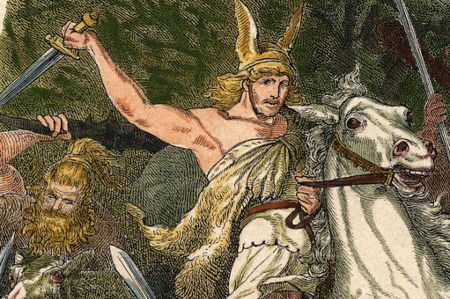Kalkriese in the Osnabrück region - scene of the Varus battle?
- Written by Portal Editor
A long-discussed myth over the centuries that has not yet been conclusively clarified: Where was the scene of the legendary Varus Battle, which is seen by so many historians of the past and even the present as a "turning point in world history".
Theodor Mommsen, an important historian and antiquarian, who spoke extensively about “The Germanic Politics of Augustus” in his speech two months after the founding of the empire in March 1871, also saw the historical significance of the battle. His works on Roman history are still of fundamental importance for today's research. He was honoured with the Nobel Prize for Literature in 1902 for his Roman History. As early as 1885, Theodor Mommsen suspected that the Varus Battle could have taken place there due to the unusual accumulation of Roman coins near Kalkriese.
Did the Varus Battle take place there?
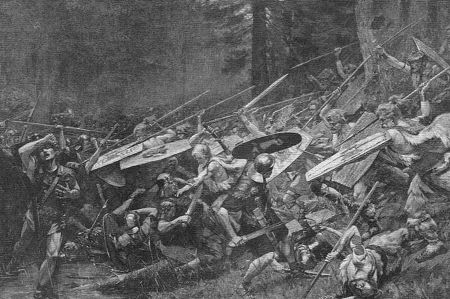 Bishop Otto von Freising, who described Augsburg as the site of the Battle of Varus in his chronicle written between 1143 and 1146, was one of the first to take up this topic in writing. Scholars like Konrad Peutinger (Peutinger Map) and Conrad Celtis followed suit. It was only with the rediscovery of Tacitus' notes around 1507 that the question of the location of the battle received a new basis, as the historian Tacitus reported an advance by Roman soldiers about five years after Varus' defeat:
Bishop Otto von Freising, who described Augsburg as the site of the Battle of Varus in his chronicle written between 1143 and 1146, was one of the first to take up this topic in writing. Scholars like Konrad Peutinger (Peutinger Map) and Conrad Celtis followed suit. It was only with the rediscovery of Tacitus' notes around 1507 that the question of the location of the battle received a new basis, as the historian Tacitus reported an advance by Roman soldiers about five years after Varus' defeat:
- “ad ultimos Bructerorum, quantumque Amisiam et Lupiam amnis inter vastatum, haud procul Teutoburgiensi saltu in quo reliquiae Vari legionumque insepultae dicebantur.”
- "to the most distant Bructerians, who devastated everything between Ems and Lippe, not far from the Teutoburg Forest, where, as it was said, the remains of Varus and his legions lay unburied."
"Battle in the Teutoburg Forest"
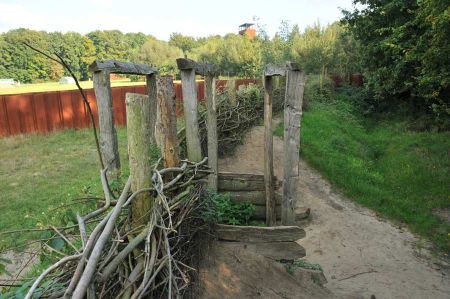 The discovery of these writings brought forward the concept of the “Battle of the Teutoburg Forest”. In 1535, Georg Spalatin speculated that the town was near Duisburg because of the similarity of the name Teutoburg. In further localization attempts, Beatus Rhenanus led the Lippe Forest, Philipp Melanchthon the Osning (today called the Teutoburg Forest) and Kassel and Martin Luther the Harz. However, all serious attempts at spatial classification since that time have been based on Tacitus' statement that the Saltus Teutoburgensis was "not far" from the area between Ems and Lippe.
The discovery of these writings brought forward the concept of the “Battle of the Teutoburg Forest”. In 1535, Georg Spalatin speculated that the town was near Duisburg because of the similarity of the name Teutoburg. In further localization attempts, Beatus Rhenanus led the Lippe Forest, Philipp Melanchthon the Osning (today called the Teutoburg Forest) and Kassel and Martin Luther the Harz. However, all serious attempts at spatial classification since that time have been based on Tacitus' statement that the Saltus Teutoburgensis was "not far" from the area between Ems and Lippe.
With British Major Tony Clunn's discovery of 162 denarii in 1987 and the discovery of three slingshot leads a year later, which at least confirmed the temporary presence of Roman troops at the site, a systematic investigation of the site was planned, yes, it was certain that a Roman-Germanic conflict must have taken place there. More recently, eight bone pits have been discovered at the site. In some, however, only the remains of one individual can be found. There were at least nine bodies in the “Great Bone Pit,” with some bones showing clear battle injuries.
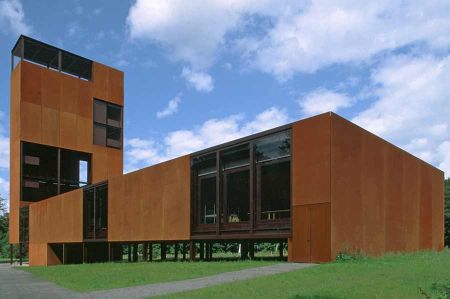 Over 4,000 finds, mostly small objects, were excavated in Kalkriese. However, so far only part of the site has been opened up through excavations. Since the more recent finds at Kalkriese also provide evidence of fighting, this place became a favourite in the discussion about the location of the battle.
Over 4,000 finds, mostly small objects, were excavated in Kalkriese. However, so far only part of the site has been opened up through excavations. Since the more recent finds at Kalkriese also provide evidence of fighting, this place became a favourite in the discussion about the location of the battle.
Of course, we were less concerned with the tourist and commercial location advantages of such a site in a specific region. In the structurally weak region around Osnabrück, things were of course completely different. Here you could immediately see the advantages that such a "battle site" in Kalkriese would bring with it. A first information centre was quickly created, which was soon to be followed by other buildings and equipment. Our first visit had to be seen against this background.
Diverse literature on the Romans
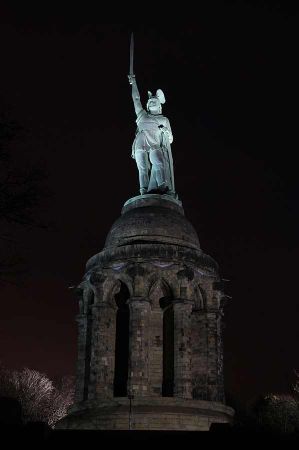 So we took advantage of our presence in northern Germany for a short trip to Kalkriese, excited to see what awaited us. First we came to a large visitor centre right at the entrance, which offered extensive information about the site as well as a wide range of literature about the Romans. Led by a tour guide, we first went into the metal museum building, which is also used as a viewing platform. At first it seems a bit repulsive, but once the explanations are given you can understand the purpose of the building and its choice of materials.
So we took advantage of our presence in northern Germany for a short trip to Kalkriese, excited to see what awaited us. First we came to a large visitor centre right at the entrance, which offered extensive information about the site as well as a wide range of literature about the Romans. Led by a tour guide, we first went into the metal museum building, which is also used as a viewing platform. At first it seems a bit repulsive, but once the explanations are given you can understand the purpose of the building and its choice of materials.
As always, such a historically oriented tour through history depends on the person who leads the tour. And, what can we say, it was impressive and never boring how data and facts were brought closer, supported with finds and every now and then a connection to the present was made. In short, it was an extremely interesting tour of the Kalkriese Museum of Finds, which ended at the top of the platform after we were introduced to the landscape structure and the circular route through the park. We then carried out this part of the exploration on our own.
Once in the park, it quickly became clear what huge areas there were still to explore. A lot of work for archaeologists and researchers who can continue to work here for years to come. Concepts that are still in their infancy here could help in the long term. Archaeological tourism is the buzzword. On our tour along Roman roads in Split in Croatia we were able to experience a really interesting constellation of cooperation between museums, administration and archaeological tourism. A model that certainly contains some interesting aspects for Kalkriese.
Please also read:
Imposing Roman bridge over the Moselle in Trier
Heraclea Lyncestis - a day trip to Bitola
-
 Varu´s battle at Kalkriese / Osnabrück
Varu´s battle at Kalkriese / Osnabrück
Varu´s battle at Kalkriese / Osnabrück
Varu´s battle at Kalkriese / Osnabrück
-
 Varu´s battle at Kalkriese / Osnabrück
Varu´s battle at Kalkriese / Osnabrück
Varu´s battle at Kalkriese / Osnabrück
Varu´s battle at Kalkriese / Osnabrück
-
 Varu´s battle at Kalkriese / Osnabrück
Varu´s battle at Kalkriese / Osnabrück
Varu´s battle at Kalkriese / Osnabrück
Varu´s battle at Kalkriese / Osnabrück
-
 Varu´s battle at Kalkriese / Osnabrück
Varu´s battle at Kalkriese / Osnabrück
Varu´s battle at Kalkriese / Osnabrück
Varu´s battle at Kalkriese / Osnabrück
-
 Varu´s battle at Kalkriese / Osnabrück
Varu´s battle at Kalkriese / Osnabrück
Varu´s battle at Kalkriese / Osnabrück
Varu´s battle at Kalkriese / Osnabrück
-
 Varu´s battle at Kalkriese / Osnabrück
Varu´s battle at Kalkriese / Osnabrück
Varu´s battle at Kalkriese / Osnabrück
Varu´s battle at Kalkriese / Osnabrück
-
 Varu´s battle at Kalkriese / Osnabrück
Varu´s battle at Kalkriese / Osnabrück
Varu´s battle at Kalkriese / Osnabrück
Varu´s battle at Kalkriese / Osnabrück
-
 Varu´s battle at Kalkriese / Osnabrück
Varu´s battle at Kalkriese / Osnabrück
Varu´s battle at Kalkriese / Osnabrück
Varu´s battle at Kalkriese / Osnabrück
-
 Varu´s battle at Kalkriese / Osnabrück
Varu´s battle at Kalkriese / Osnabrück
Varu´s battle at Kalkriese / Osnabrück
Varu´s battle at Kalkriese / Osnabrück
https://www.alaturka.info/en/germany/lower-saxony/6306-kalkriese-in-the-osnabrueck-region-scene-of-the-varus-battle#sigProId94a8bd84cf
